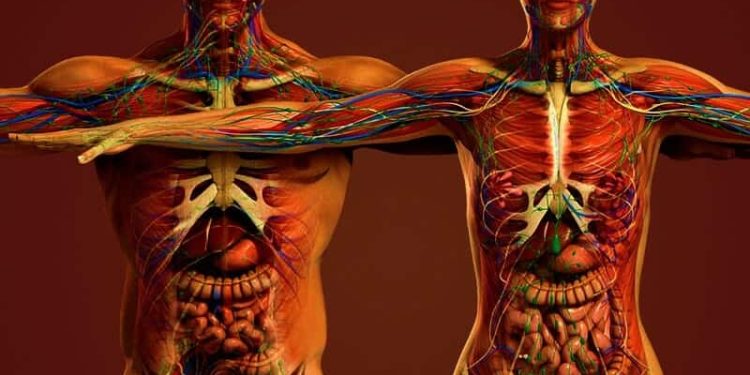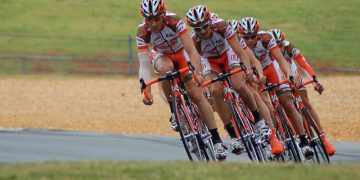The human body is a miraculous feat of engineering and biology. It’s capable of amazing feats of strength, agility, and resilience. Your body has natural defense mechanisms to fight off disease, heal wounds, and even regenerate organs if they become severely damaged. The human body is also extremely complex. There are many different systems that work together in perfect sync to keep you alive and functioning. Whether you want to become a surgeon or are just interested in your own anatomy, understanding the structure of the human body is essential for keeping it healthy. The anatomy of the human body can be broken down into several different systems: bones, blood vessels, muscles, nerves, and internal organs. Each system has its own set of subdivisions that help us understand how they function as a whole. This article will give you an overview of the structure of the human body as a whole along with details about each individual system that makes up this intricate organism we call home…
The Skeletal System
The skeletal system is a network of bones, cartilage, and ligaments that support and protect the rest of the human body. Bones are living tissue that contain nerves, blood vessels, and marrow. The marrow produces blood cells while the blood vessels and nerves supply nutrients to the bones. The bones of the skeletal system provide a framework to support the rest of the body with little movement of their own. The bones of the human body are separated into two types: long bones and short bones. Long bones are found in the arms and legs, while short bones are found in the hands and feet. Both types of bones are made up of three main parts: the shaft, the joints, and the ends. The shaft is the long part of the bone that connects to the muscle. The joints are where two bones meet and move against each other. The ends are the pointed parts of the bones where muscles and ligaments attach.
The Muscular System
Muscles are organs that control movement and generate body heat. There are around 650 different muscles in the human body, with the heart being the largest. Muscles are composed of fibers that, when contracted, create movement. The size and type of muscle fibers determine how much force a muscle is capable of producing. The structure of a muscle starts with the skeletal muscle fibers, which are surrounded by connective tissue and blood vessels. Muscles that move the joints are called voluntary muscles, while those that control the internal organs are involuntary.
The Nervous System
The nervous system is composed of two parts: the central nervous system and the peripheral nervous system. The central nervous system is made up of the brain and spinal cord, while the peripheral nervous system includes the cranial and spinal nerves. All sensory and motor pathways originate from the central nervous system. The peripheral system is responsible for conveying information from the sensory receptors. The central nervous system is protected by the skull and vertebral column, while the peripheral nervous system is wrapped in a sheath called the neurilemma. The central nervous system is made up of gray matter, white matter, and the meninges. The gray matter contains the neurons and is responsible for the processing of information. White matter contains the axons that are capable of transmitting this processed information throughout the body. The meninges are three layers of tissue that surround the central nervous system. They are designed to protect the brain and spinal cord while also maintaining the proper amount of pressure to circulate blood through the capillaries that supply the nervous system.
The Respiratory System
The respiratory system is responsible for moving air in and out of the lungs. Air enters the body through the nose and mouth where it travels down the trachea and into the lungs. The lungs are made of spongy tissue called the alveoli that are surrounded by capillaries that take the oxygen from the air and transport it to the bloodstream. After the air has been processed, it travels back out of the body through the trachea and nose. During this process, the respiratory system uses muscles and the nervous system to help create the necessary pressure and force to move air in and out of the body.
The Digestive System
The digestive system is a network of organs that break down nutrients from food for use by the body. Food enters the digestive system through the mouth and travels down the esophagus until it reaches the stomach. The stomach is responsible for mixing the food with digestive juices and producing the necessary force to push the food through the rest of the digestive system. The food then travels into the small intestine where it is broken down even further while being lifted up and out of the body through the large intestine. The liver and pancreas are also part of the digestive system as they produce important digestive enzymes used to break down nutrients in food.
The Urinary System
The urinary system is responsible for filtering waste products from the blood and removing them from the body. The kidneys are two organs located below the ribs behind the abdominal cavity. They filter waste products from the bloodstream and produce urine, which travels through the ureters to the bladder. The bladder is a sac-like organ that stores the urine until it is ready to be expelled from the body through the urethra. The skin is another organ in the urinary system because it is capable of excreting water and salts through sweating. This helps regulate the amount of fluids in the body, which is especially important in environments with high temperatures or humidity such as deserts or tropical rainforests.
Conclusion
The human body is a vast and complex network of organs and tissues that work together in perfect sync to keep us alive and functioning. The skeletal, muscular, nervous, respiratory, digestive, and urinary systems are intricately connected and work together with the internal organs to keep the body healthy and functioning as a whole. Understanding how these systems function is crucial for maintaining good health and longevity.
























